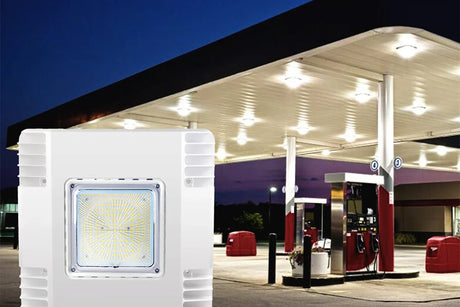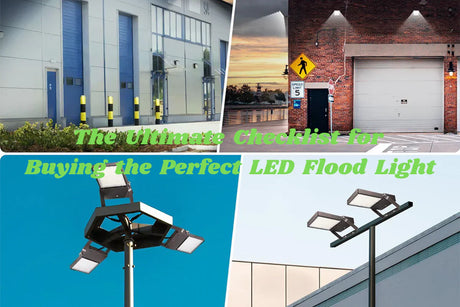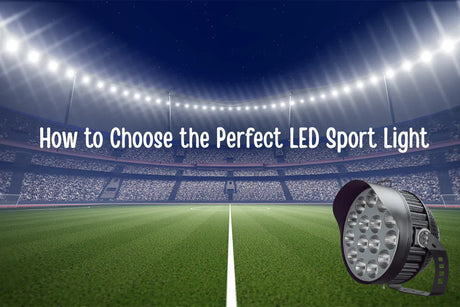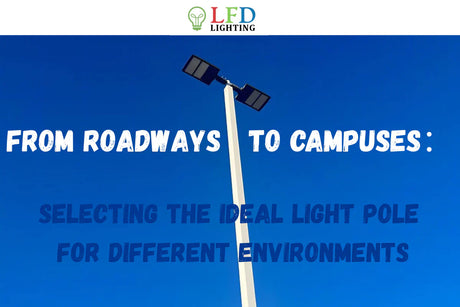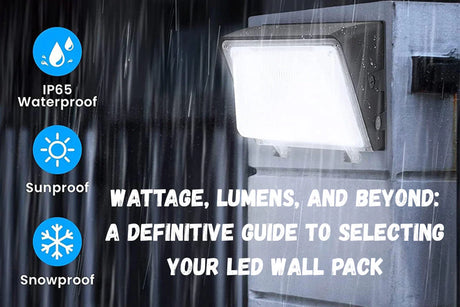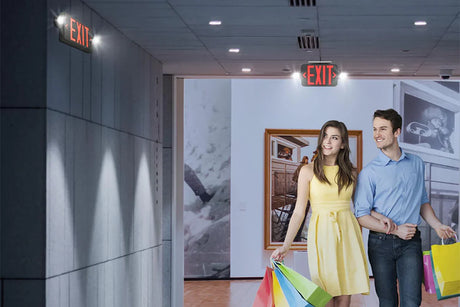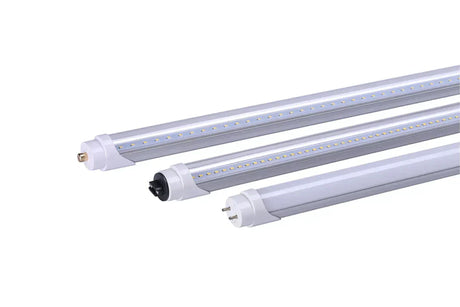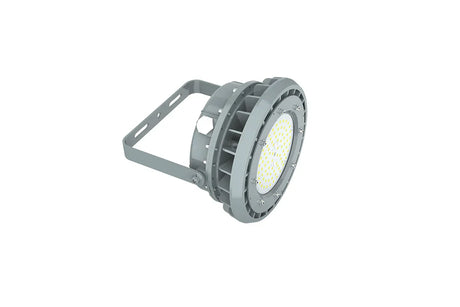Light poles are more than just functional structures; they are critical elements that enhance safety, define spaces, and contribute to the aesthetic character of an environment. Selecting the right light pole involves a careful balance of durability, design, compliance, and performance tailored to specific applications. At LFD Lighting, we provide engineered solutions that meet the distinct demands of any setting, from bustling roadways to serene campuses.
Understanding the Core Requirements
The fundamental purpose of a light pole is to support illumination efficiently and safely. However, the priorities shift significantly depending on the environment:
- Roadways & Highways: Here, the paramount concern is safety and reliability. Poles must be exceptionally durable to withstand high-wind events, vehicle impact (in some cases), and long-term exposure to the elements. They need to support bright, uniform lighting that meets strict regulatory standards for public roads.
- Commercial & Parking Lots: These settings require a blend of durability, ample illumination for security, and often, aesthetic appeal. Poles must provide wide light distribution to eliminate dark spots, enhancing safety for pedestrians and vehicles. The design often contributes to the property's overall image.
- Campuses & Pedestrian Areas: In universities, parks, and urban walkways, aesthetics, scale, and pedestrian-friendly lighting take precedence. Poles should complement the architectural style, provide comfortable, glare-free light for people on foot, and foster a sense of community and safety.
Material Selection: Matching the Environment
The choice of material is the first and most critical step in ensuring longevity and performance.
- Galvanized Steel for Maximum Durability: For environments where strength and longevity are non-negotiable, such as roadways, highways, and industrial areas, galvanized steel poles are the gold standard. The hot-dip galvanizing process provides a thick, sacrificial coating that offers exceptional corrosion resistance, making these poles capable of enduring harsh weather conditions for decades. LFD Lighting's range of heavy-duty steel light poles is engineered for these demanding applications.
- Aluminum for a Lightweight, Corrosion-Resistant Option: Aluminum poles offer excellent natural corrosion resistance, making them a superb choice for coastal areas, parking lots, and urban settings. They are lighter than steel, simplifying installation, and are available in a wide variety of stylish designs and powder-coat finishes. Explore LFD Lighting's versatile aluminum light poles that combine durability with aesthetic flexibility.
- Fiberglass for Ultimate Corrosion Resistance: In highly corrosive environments like chemical plants or coastal regions, or where electrical non-conductivity is a priority, fiberglass composite poles are ideal. They are impervious to rust and UV degradation, ensuring a long maintenance-free life.
Design and Aesthetic Considerations
The visual impact of a light pole should not be underestimated.
- Decorative Poles for Community Spaces: On campuses, in downtown districts, or at hotel entrances, decorative poles enhance the landscape. LFD Lighting offers designs with fluted shafts, ornamental brackets, and custom finishes that add character and elegance to any project.
- Modern & Minimalist Designs for Contemporary Settings: For commercial plazas or modern architectural complexes, sleek, simple designs with clean lines are often preferred. These poles provide illumination without visual clutter, emphasizing the surrounding space.
- Standard Round or Tapered Poles for Utility and Function: For roadways, parking lots, and areas where function is the primary focus, straightforward, robust designs like standard steel and aluminum poles offer the best value and performance.
Technical Specifications: Height, Wind Load, and Mounting
Technical engineering ensures safety and performance.
- Height and Arm Length: The pole height and arm length determine the light distribution pattern. Roadways require taller poles (30-50 feet) with longer arms to illuminate wide areas, while pedestrian walkways need shorter poles (10-20 feet) for more intimate, human-scale lighting.
- Wind Load Rating: This is a critical engineering factor. Poles must be rated to survive the maximum wind speeds of a region. LFD Lighting engineers its poles, including various accessories and bases, to meet specific wind load requirements, ensuring stability and safety.
- Mounting Options (Anchor Base vs. Direct Burial): Anchor base systems are the standard for most commercial and roadway applications, allowing for precise leveling and a strong connection to a concrete foundation. Direct burial poles can be a cost-effective solution for simpler applications but may offer less stability in high-wind zones.


